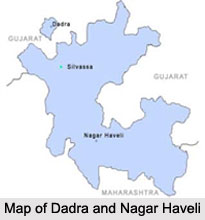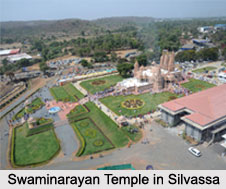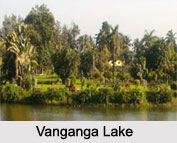 Dadra and Nagar Haveli is an Indian union territory, located in western part of India. Dadra and Nagar Haveli is crammed between Maharashtra and Gujarat. The capital city of Dadra and Nagar Haveli is Silvassa. Dadra is an enclave lying a few kilometers north of Nagar Haveli in Gujarat. The Daman Ganga River flows through the territory.
Dadra and Nagar Haveli is an Indian union territory, located in western part of India. Dadra and Nagar Haveli is crammed between Maharashtra and Gujarat. The capital city of Dadra and Nagar Haveli is Silvassa. Dadra is an enclave lying a few kilometers north of Nagar Haveli in Gujarat. The Daman Ganga River flows through the territory.
History of Dadra & Nagar Haveli
The history of Dadra and Nagar Haveli began with the rule of Kohli tribe. In AD 1262, the Koli chieftains of the Dadar and Nagar Haveli were defeated by Rajput invaders and the region became under their clutches and they ruled Ramnagar, which was a small state that included Nagar Haveli in its territory. They dominated the region till the mid-18th century, when the Marathas acquired Nagar Haveli. Then Dadra and Nagar Haveli fell under the hands of Portuguese colonial power till the mass uprising happened against Portuguese militia on 2nd August 1954. After that, Dadra and Nagar Haveli came under the Union Government of India and recognized as Union territory of India. As per the Constitutional amendments at all India level, Dadra and Nagar Haveli District Panchayat and 11 village Panchayats were constituted.
Geography of Dadra & Nagar Haveli
Dadra and Nagar Haveli is located on the western side of the foot hills of the Western Ghats Mountain Range in India and about 40 percent of the geographical area is covered with forests. It lies between the parallels of 20 degrees and 20 degrees 25 minutes of latitude north and between the meridian 72 degrees 50 minutes and 73 degrees 15 minutes of longitude. The west, north and south of the territory is surrounded by the Valsad district of Gujarat and towards the south and southeast by Thane District and Nasik district of Maharashtra. The land has a hilly terrain and the soil is rich and fertile. The river Daman-Ganga and its three tributaries intersect the terrain.
 Climate of Dadra & Nagar Haveli
Climate of Dadra & Nagar Haveli
The climate of Dadra & Nagar Haveli is warm and moist during the summer months but less warm during the monsoon months. The southwest monsoon is from June to September. During this time there is profuse rainfall. The rainfall is about 250 to 300cm. The winter months are generally pleasant.
Demographics of Dadra and Nagar Haveli
According to the 2011 census the population is 342853. Dadra and Nagar Haveli is the homeland of various tribes such as Dhodia Tribe, Kokna Tribe and Varli Tribe. The Dhodias and Dublas are mainly confined to the Northern part of Dadra and Nagar Haveli whereas the Koknas and Varlis and found all over. The languages spoken by the people are Hindi, Marathi and Gujarati. The literacy rate is 77.65 percent. The male literacy is 86.46 percent and the female literacy is 65.93 percent.
Administration of Dadra and Nagar Haveli
Dadra and Nagar Haveli consists of two sections. Dadra consists of three villages and Nagar Haveli consists of 69 villages. The headquarters of the district Dadar and Nagar Haveli is Silvassa.
Economy of Dadra and Nagar Haveli
The agriculture is the main source of economy in Dadra and Nagar Haveli. The region has about 23,627 hectares under cultivation. The main food crops cultivated in Dadra and Nagar Haveli is paddy, ragi, millets, jowar, wheat, tuvar, oilseeds, sugarcane and pulses. Brinjal, tomato, cabbage, and cauliflower are the main vegetables grown here. Forestry is an important economic resource of Dadra and Nagar Haveli. It consists of teak, sadra, khair, mahara and sesame. The forests constitute about 43 percentage of the total geographical area. Dadra and Nagar Haveli is also dependent on manufacturing of spectacle frame, flooring tiles, art silk fabrics, chemicals, detergent powder, electrical fixtures and watches.
Tourism in Dadra and Nagar Haveli
Dadra and Nagar Haveli is dotted with many tourism destinations like Swaminarayan Temple in Silvassa, Dudhni Lake, Deer Park, Nakshatra Garden, Vanganga Lake Garden, Silvassa Tribal Museum, Silvassa Vasona Lion Safari, Vanganga Lake, Island Garden Dadra Park, Church of Our Lady of Piety, Hirwa Van Gardens, Butterfly Park and Om Temple.






